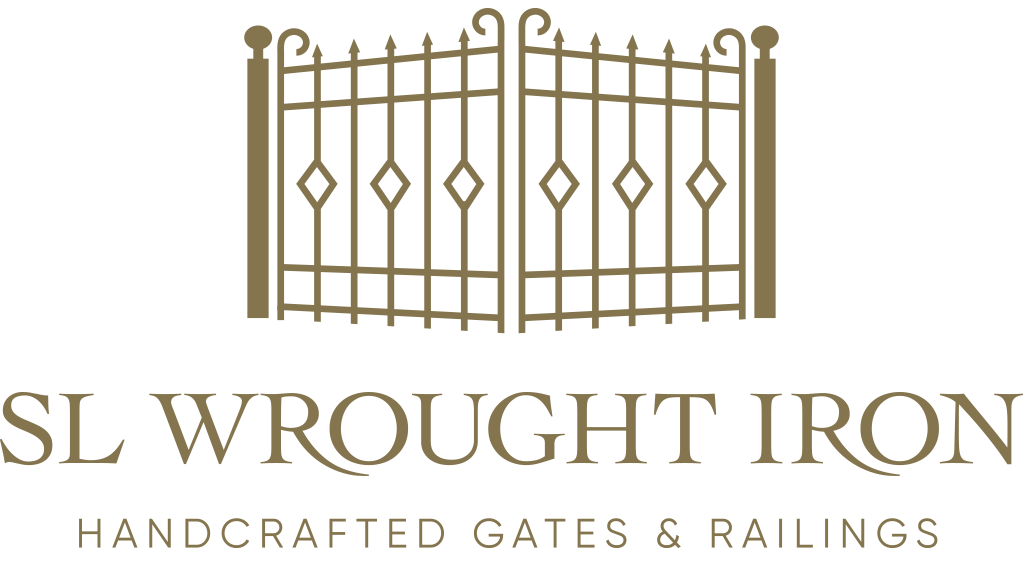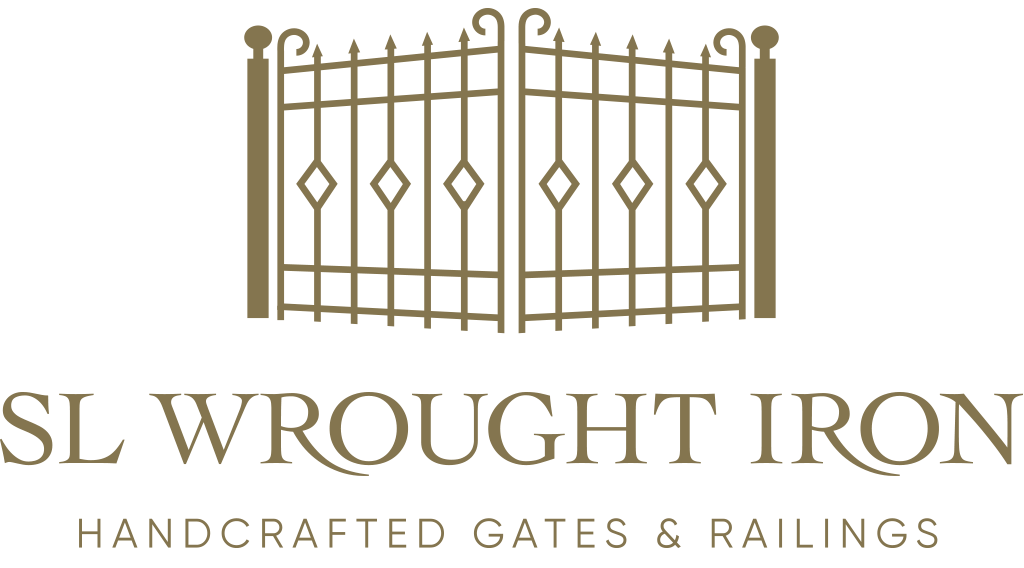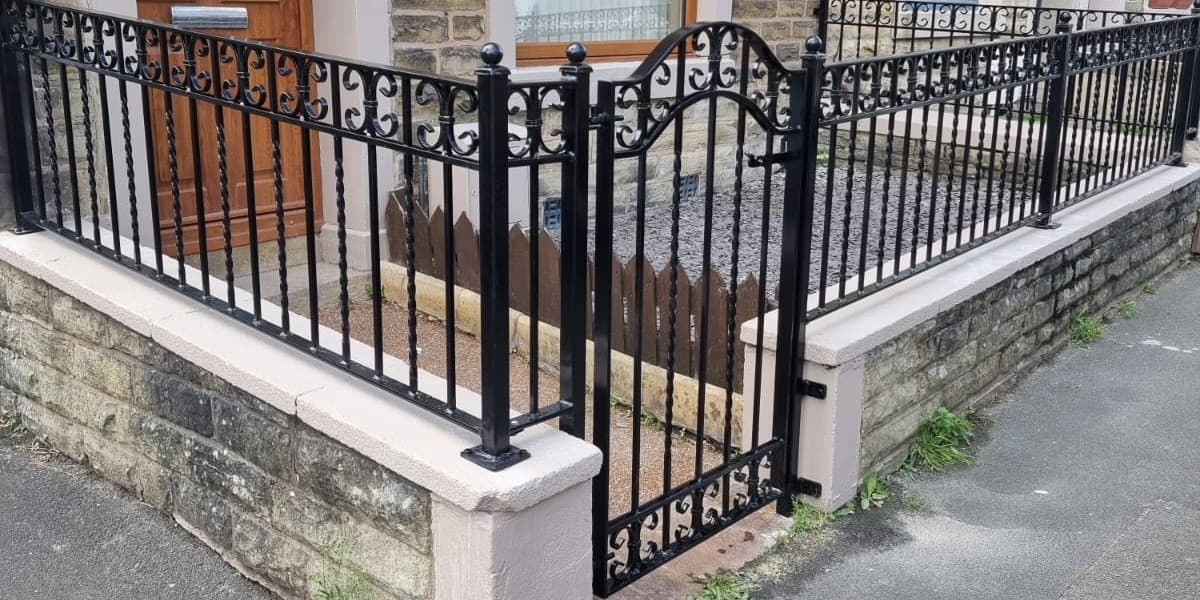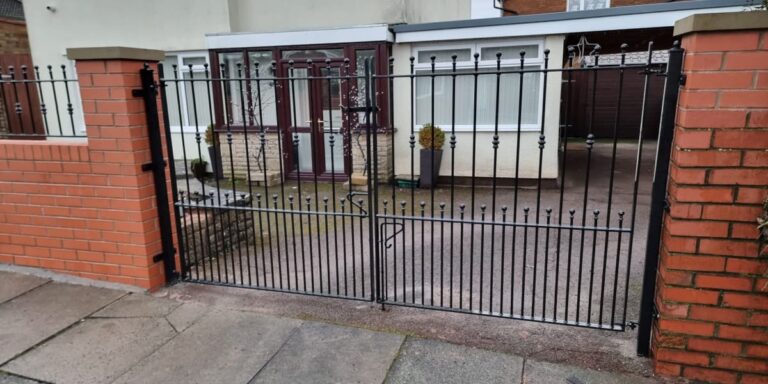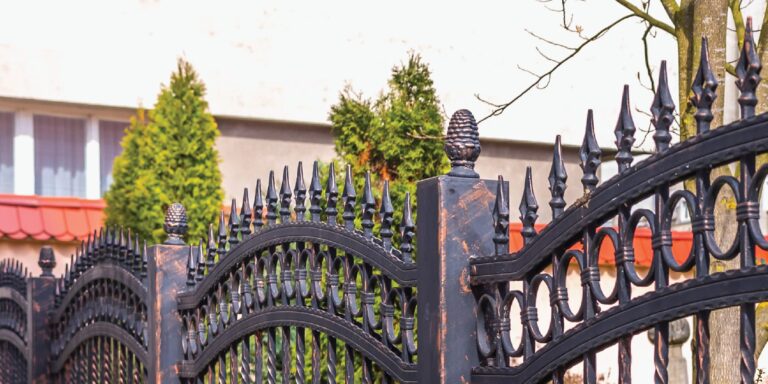This is a question that we get a lot here at SL Wrought Iron, and understandably so – it’s a term that has a couple of different definitions, depending on the context in which it’s being used. As experts with over 30 years of experience in manufacturing and supplying metal gates and railings, we’re well-versed in all the nuances of the term – so here’s a quick and simple explanation of all the different meanings the phrase encompasses.
What is wrought iron? The technical definition
Wrought iron refers to iron that’s been heated and worked with tools – in other words, hammered and formed into shape. “Wrought iron” literally means “worked iron”, as the word wrought is an archaic form of the past participle of the verb “to work”.
Up until relatively recently, the term was used specifically to refer to finished iron goods – in other words, those manufactured by a blacksmith. Today though, wrought iron is a more general term for the commodity. The modern functional equivalent of wrought iron is mild steel, also sometimes referred to as low carbon steel.
When was wrought iron invented?
There’s evidence that wrought iron was used as early as 2000 years BC in the Anatolian peninsula (a region that’s now Turkey). It was particularly widely used in construction throughout the 19th century, and could be found in everything from horseshoes to railways.
Before the development of techniques which would make steel a more commercially viable construction material, wrought iron was the most common form of malleable iron. However, with the advent of large-scale steel production, steel began to take its place as the dominant building material.
When did wrought iron stop being used?
Towards the 1970s, wrought iron pieces (those handcrafted by blacksmiths) gradually fell out of widespread usage. That’s largely because around the 20th century, gradual advances in metallurgy meant that it became progressively easier and less expensive to machine-form and weld metal parts. Wrought iron, on the other hand, was steadily regarded as more expensive and time-consuming by comparison. As a result, from the 1970s onwards most ‘true’ wrought iron pieces (as they came to be known) have been manufactured as antiques or specialty pieces smithed by local artisans.
What is wrought iron? The term as it’s used today
‘True’ wrought iron, as it’s now sometimes referred to – the iron worked by blacksmiths – is now no longer produced on a commercial scale.
Most people now use the term ‘wrought iron’ to refer to steel that’s been worked and formed by hand, or with modern machinery. Many new products described as wrought iron, such as guard rails, garden furniture and gates, are all actually made of mild steel. However, they’re referred to as wrought iron because of their close physical resemblance to the ‘true’ wrought iron of centuries past.
That’s also the case with us here at SL Wrought Iron. Our products are manufactured using mild steel, before it’s then hot dipped galvanised to protect it from rust and corrosion, before finally being powder coated.
It can all understandably get a little confusing, so if you need it summed up: the takeaway is that if a modern product is described as wrought iron, then unless you know for a fact it’s been handcrafted by a blacksmith, it’s generally safe to assume it’s actually made of mild steel.
Why did mild steel replace wrought iron?
Essentially mild steel has more carbon content, which is what gives it greater strength and a higher resistance to corrosion. (In other words, it doesn’t rust quite as easily.) It also retains an impressive strength and durability, and can be welded easily too. As an extra bonus it’s also easier to paint, which means it can be coloured in a variety of different shades for greater creative expression.
And of course, mild steel is also more affordable than ‘true’ worked iron, which is why mild steel tends to be used for so many different applications, whereas the latter is now largely reserved for specialist projects like artwork and one-off pieces of furniture.
Now, if wrought iron gates and railings are something you’re sizing up for your own property, that’s exactly where we can help here at SL Wrought Iron. We have over three decades of experience behind us, and all of our products are handcrafted by talented experts right here in our Lancashire factory.You can choose from an expansive range of styles right here on our website, and we can even make bespoke products according to individual customer specifications!
Feel free to have a look around – or alternatively, if you’ve got any questions or need any advice, don’t hesitate to give us a call on 01254 236994, and we’ll be happy to see how we can help.
